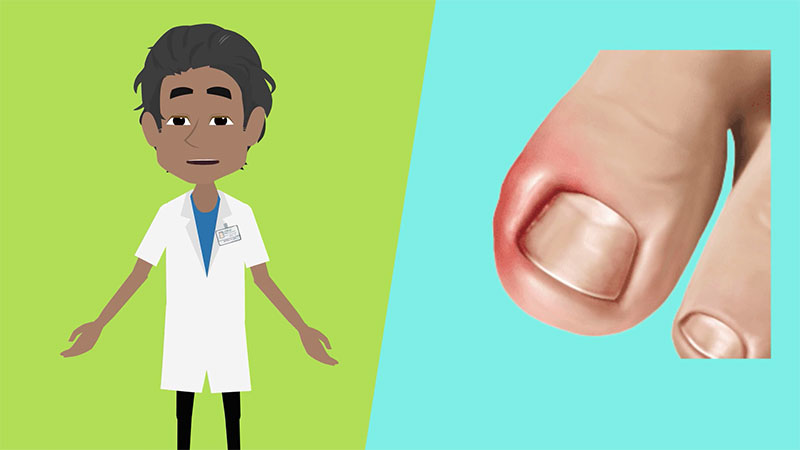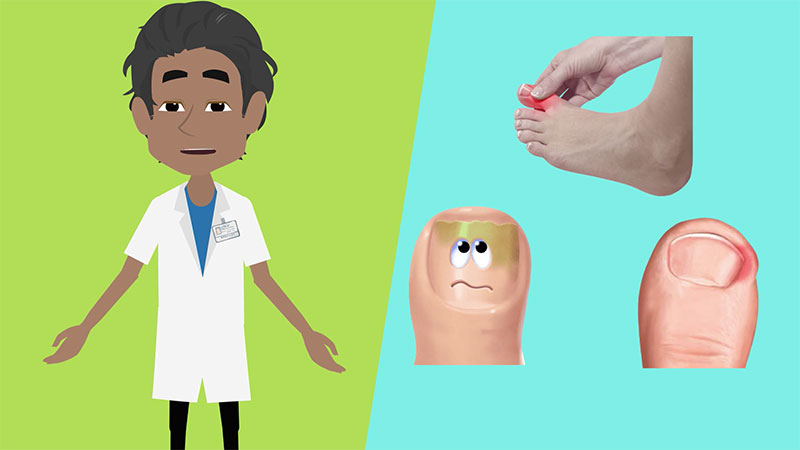How to Prevent and Treat Ingrown Nail
Do you struggle with painful, ingrown toenails? If so, you’re not alone. Ingrown nail are a common problem—one that can have serious implications for your health if left untreated. Fortunately, preventive steps can help reduce the risk of developing an ingrown nail and create a roadmap for effective treatment when issues do arise. In this blog post, we’ll show you how to prevent and treat an ingrown nail using simple workflow background information, so whether you’re a homeowner dealing with uncomfortable toes or a marketer looking for ways to help your clients address their healthcare needs more effectively – keep reading!

Ingrown Nail Treatment
What is an Ingrown Nail and How to Prevent It
Ingrown nails, also known as onychocryptosis, occur when the edge of a toenail grows into the skin next to it, leading to pain, swelling and infection. The condition can be caused by a variety of factors, including tight-fitting shoes, improper toenail trimming, and genetic predisposition. To prevent ingrown nails, it is important to cut toenails straight across, avoid cutting them too short, and wear comfortable, well-fitting shoes. In severe cases, a doctor may need to intervene to remove the affected portion of the nail or prescribe antibiotics to clear up any infection.
Common Causes of an Ingrown Nail
An ingrown nail occurs when the edge of the nail grows into the skin, causing pain, swelling, and even infection. There are several common causes of an ingrown nail, including wearing shoes that are too tight, improperly trimming your nails, or having naturally curved nails. Athletes also have a higher risk of developing ingrown nails, as the constant pressure on their feet can cause the nails to grow abnormally. It’s important to treat an ingrown nail as soon as possible to prevent further complications, such as infection.
How to Treat Ingrown Nails at Home
Ingrown nails can be a frustrating and painful condition for many people. Fortunately, there are several ways to treat ingrown nails at home. Soaking your feet in warm water for 15 to 20 minutes, two to three times a day can help reduce swelling and discomfort. Gently pushing the skin away from the nail with a cotton ball or Q-tip can also help the nail grow in the right direction. Additionally, using over-the-counter pain relievers or applying topical ointments can provide relief. However, if the ingrown nail is infected or causing severe pain, it is important to seek professional medical attention.
When to See a Doctor For Treatment
Maintaining good health requires careful attention to any symptoms or changes in our bodies. While it is often possible to self-treat minor ailments, there are times when visiting a health professional is crucial. If you experience ongoing pain or discomfort that interferes with your daily routine, this may be a sign that it’s time to seek medical attention. Additionally, if you notice any unusual symptoms, such as difficulty breathing or chest pain, you should seek immediate medical attention. It’s important to remember that seeking timely medical treatment can help prevent more serious health conditions and ensure your long-term well-being.
Tips for Long-Term Prevention of Ingrown Nails
Ingrown nails can be a pesky and painful problem that can often leave you feeling uncomfortable and frustrated. However, with proper care and attention, they can be prevented. To avoid ingrown nails, it is important to wear shoes that fit properly and trim your nails straight across. Avoiding tight socks and shoes, as well as regularly moisturizing your nails and surrounding skin, can also help prevent ingrown nails from forming.
Alternative Treatments for Ingrown Nails
Ingrown nails can be a painful condition that’s caused by the nail growing into the skin surrounding it. While traditional treatments ingrown nails such as surgery and antibiotics can be effective, some people prefer alternative remedies. These may include soaking the affected foot in warm water with Epsom salts or applying essential oils such as tea tree oil or lavender oil to the affected area. Other treatments may involve using a warm compress, elevating the foot, or even trying acupuncture. While it’s essential to speak to a healthcare professional before attempting any alternative remedies, it’s worth exploring all options for managing the discomfort associated with ingrown nails.
Taking excellent care of your nails and feet is essential for preventing ingrown nails in the future. With proper cutting, file usage and avoidance of tight shoes, you can save yourself a great deal of discomfort and stress. If possible, use alternative treatments such as different oils or foam pads to lower your risk for further irritation. Overall, taking precautionary measures are key in lowering your chances of having an ingrown nail in the future.

Treatment of Ingrown Nail
Flagstaff Foot Doctors: Anthony Rosales DPM
https://www.google.com/maps?cid=8835841318590452161
421 N Humphreys St, Flagstaff, AZ 86001, United States
(928) 774-4825
https://flagstafffootandankle.com/
